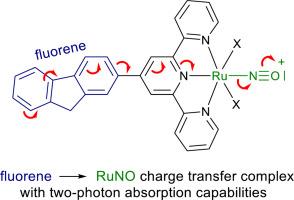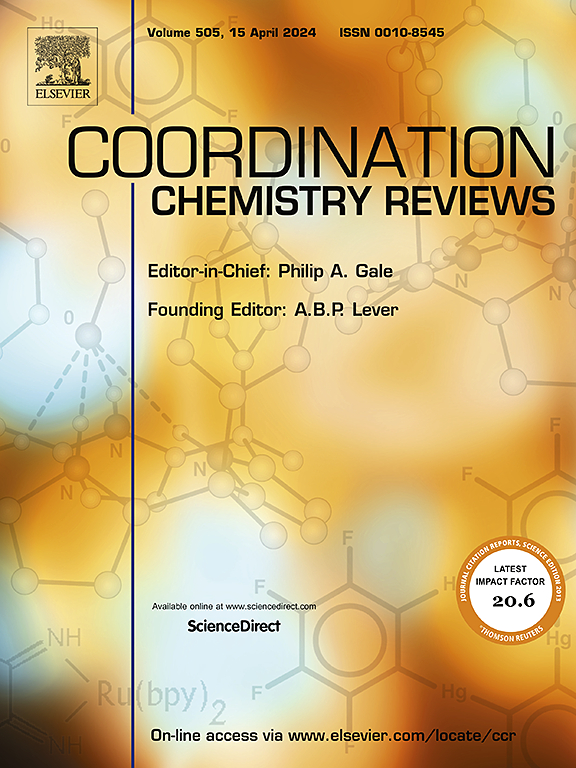芴在钌(三联吡啶)(NO)配合物单光子或双光子吸收光释放一氧化氮中的应用
IF 23.5
1区 化学
Q1 CHEMISTRY, INORGANIC & NUCLEAR
引用次数: 0
摘要
综述了芴(2,2′-亚甲基联苯)作为供体取代基在硝酸钌配合物中释放一氧化氮(NO)的应用。在双光子吸收(TPA)中设计高效发色团时,芴是一种众所周知的有机碎片,这种技术应该会导致有前途的治疗应用。在简要介绍TPA分子起源的基础上,介绍了芴基多吡啶配体的设计。本文介绍了文献报道的不同的氟酰联吡啶和大多数氟酰三联吡啶基的Ru-NO配合物。在所有这些化合物中,芴单元作为电子供体向退出的RuNO片段。最后,展望了利用芴作为荧光天线的可能性,并展望了新的前景。本文章由计算机程序翻译,如有差异,请以英文原文为准。


The use of fluorene in the photorelease of nitric oxide from Ru(terpyridine)(NO) complexes by one- or two-photon absorption
The use of fluorene (2,2′-methylenebiphenyl) as a donating substituent for the release of nitric oxide (NO) from ruthenium nitrosyl (Ru-NO) complexes is reviewed. Fluorene is a well-known organic fragment in the design of efficient chromophores in two-photon absorption (TPA), a technic that should lead to promising therapeutic application of NO delivery. After a brief introduction on the origin of TPA in molecules, the design of fluorene-based polypyridine ligand is described. The different fluorenylbipyridine and mostly fluorenylterpyridine-based Ru-NO complexes reported in the literature are presented. In all these compounds, the fluorene units act as electron donor towards the withdrawing RuNO fragment. Finally, the possibility of using fluorene as a fluorescent antenna is envisioned and new perspectives are drawn.
求助全文
通过发布文献求助,成功后即可免费获取论文全文。
去求助
来源期刊

Coordination Chemistry Reviews
化学-无机化学与核化学
CiteScore
34.30
自引率
5.30%
发文量
457
审稿时长
54 days
期刊介绍:
Coordination Chemistry Reviews offers rapid publication of review articles on current and significant topics in coordination chemistry, encompassing organometallic, supramolecular, theoretical, and bioinorganic chemistry. It also covers catalysis, materials chemistry, and metal-organic frameworks from a coordination chemistry perspective. Reviews summarize recent developments or discuss specific techniques, welcoming contributions from both established and emerging researchers.
The journal releases special issues on timely subjects, including those featuring contributions from specific regions or conferences. Occasional full-length book articles are also featured. Additionally, special volumes cover annual reviews of main group chemistry, transition metal group chemistry, and organometallic chemistry. These comprehensive reviews are vital resources for those engaged in coordination chemistry, further establishing Coordination Chemistry Reviews as a hub for insightful surveys in inorganic and physical inorganic chemistry.
 求助内容:
求助内容: 应助结果提醒方式:
应助结果提醒方式:


